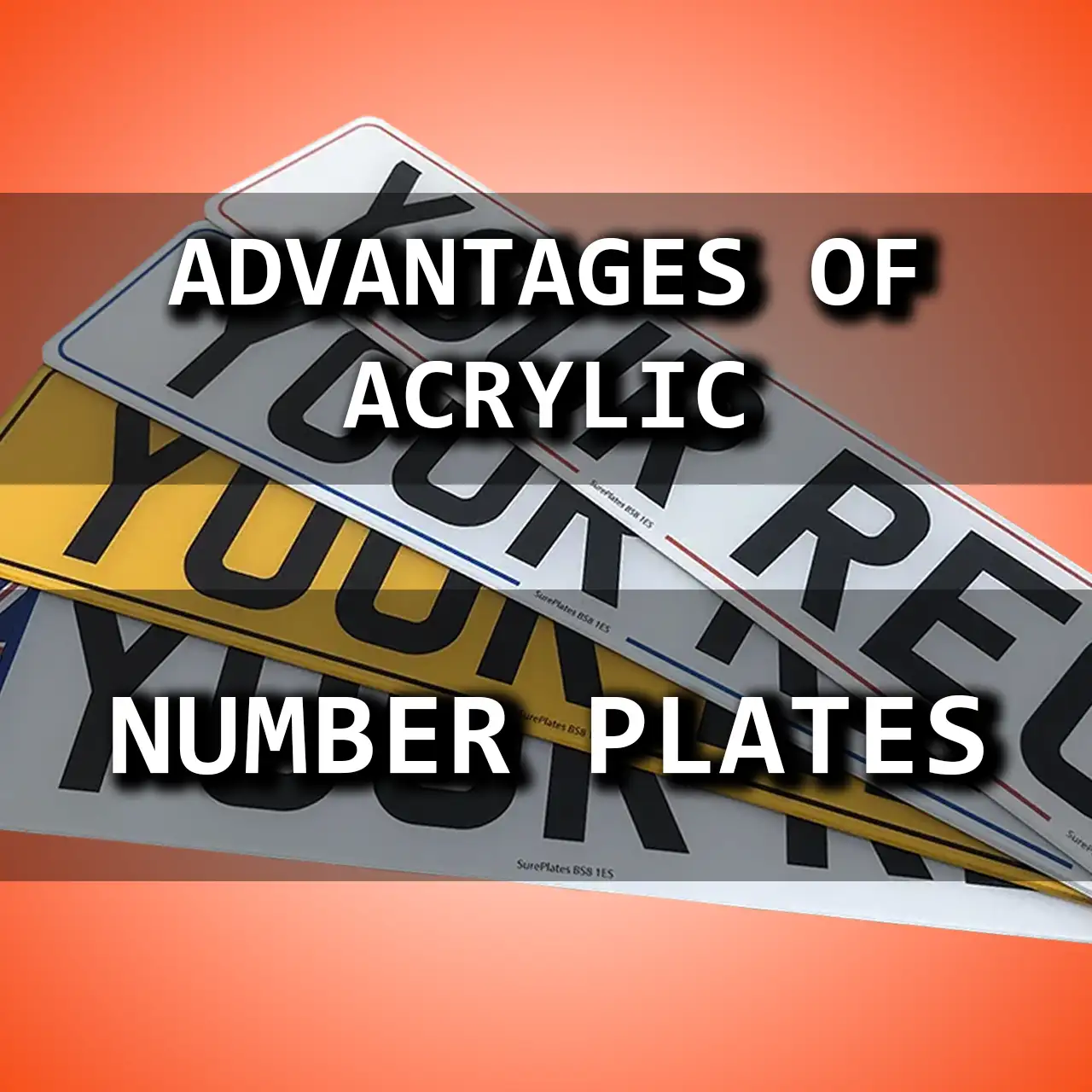When it comes to choosing number plates for your vehicle, there are several materials to consider, each with its own set of advantages and disadvantages. Two of the most common options are acrylic and metal plates. In this article, we’ll explore the pros and cons of acrylic number plates compared to their metal counterparts, helping you make an informed decision when selecting the best material for your vehicle’s registration plates.
Unleashing Your Creativity: Customisation and Aesthetics
One of the primary advantages of acrylic number plates is their ease of customisation. Acrylic plates more easily allow for a wide range of design options, including coloured borders & plate markings, different font styles (such as 4D characters or domed gel characters), and flags. These can be printed in high-resolution for a crisp, sharp look. Additionally, acrylic is readily available in a range of thicknesses, so if 4D plates are your thing, you can choose from characters with different thicknesses depending on your taste.
In contrast, metal plates, while offering a classic and timeless appearance, may be more limited in terms of customisation. Although it is possible to print coloured borders and flags on a clear film and laminate it to a metal plate, this process can make the print less durable and less protected compared to acrylic plates. Furthermore, displaying different font styles (such as gel or 4D) with these customisations can also be more challenging, as bonding the characters to a clear film laminated to the plate may not be as long-lasting, risking the characters coming off over time.
The Toughness Test: Durability and Longevity
When it comes to durability, both acrylic and metal plates have their strengths and weaknesses. Acrylic is a highly durable plastic material that is resistant to impact, shattering, and cracking. Acrylic plates are less likely to bend or warp over time, maintaining their shape and integrity even in harsh weather conditions. However, they may be more prone to scratches and abrasions compared to metal plates.
Metal plates, typically made from aluminium or stainless steel, are known for their strength and resistance to wear and tear. They are less likely to scratch or suffer from surface abrasions compared to acrylic plates. However, metal plates may be more susceptible to bending, denting, or corrosion, especially if exposed to harsh environmental conditions or physical impact. Some metal plates can rust, leaving behind unsightly stains on your vehicle.
Further Reading
You may also be interested in: The Future of Number Plates: Will We Still Need Them in the Age of Self-Driving Cars?
The Bottom Line: Cost and Market Demand
Another factor to consider when choosing between acrylic and metal number plates is cost and market demand. Acrylic plates are generally more affordable than metal plates, making them a cost-effective option for many vehicle owners. The equipment needed to produce acrylic plates is also less expensive compared to the machinery required for pressed metal plates.
In recent years, there has been a shift in popularity from metal to acrylic plates. The demand for metal plates has decreased, while acrylic plates have gained more traction in the market. This trend can be attributed to the versatility, affordability, and customisation options offered by acrylic plates.
If you’re in the market for replacement number plates, opting for acrylic plates can provide you with a wide range of options to choose from, all while keeping your costs down. With their increasing popularity and cost-effectiveness, acrylic plates are a smart choice for many vehicle owners.
Here’s a comparison table of acrylic and metal number plates:
| Feature | Acrylic Plates | Metal Plates |
|---|---|---|
| Customisation | Easily customisable with borders, flags, coloured markings, font styles | Limited customisation options |
| Durability | Highly resistant to impact, shattering, and cracking | Strong and resistant to wear and tear |
| Scratch Resistance | More prone to scratches and abrasions | Less likely to scratch or suffer surface abrasions |
| Cost | Generally more affordable | More expensive due to production equipment |
| Market Demand | Very popularity | Decreasing demand in recent years |
Eco-Friendly Considerations: Environmental Impact
As environmental concerns continue to shape consumer choices, it’s worth considering the ecological impact of your number plate material. Acrylic plates, being made from plastic, are derived from petroleum, which is a non-renewable resource. However, acrylic is recyclable, and many manufacturers now use recycled acrylic to reduce their environmental footprint.
On the other hand, metal plates, particularly those made from aluminum, are highly recyclable and can be repurposed multiple times without losing their quality. The production of metal plates may also have a lower carbon footprint compared to the manufacturing of acrylic plates.
While both materials have their environmental advantages and disadvantages, choosing a supplier committed to sustainable practices can help minimise the ecological impact of your number plate choice.
Conclusion
When deciding between acrylic and metal number plates, it’s essential to consider factors such as customisation, durability, cost, and market demand. Acrylic plates offer excellent versatility in design and are more affordable, making them an increasingly popular choice among vehicle owners. However, metal plates still have their place, providing a classic and timeless look for those who prefer a more traditional appearance.
Ultimately, the choice between acrylic and metal number plates depends on your personal preferences, budget, and the specific requirements of your vehicle. By weighing the advantages and disadvantages of each material, you can make an informed decision that best suits your needs.

